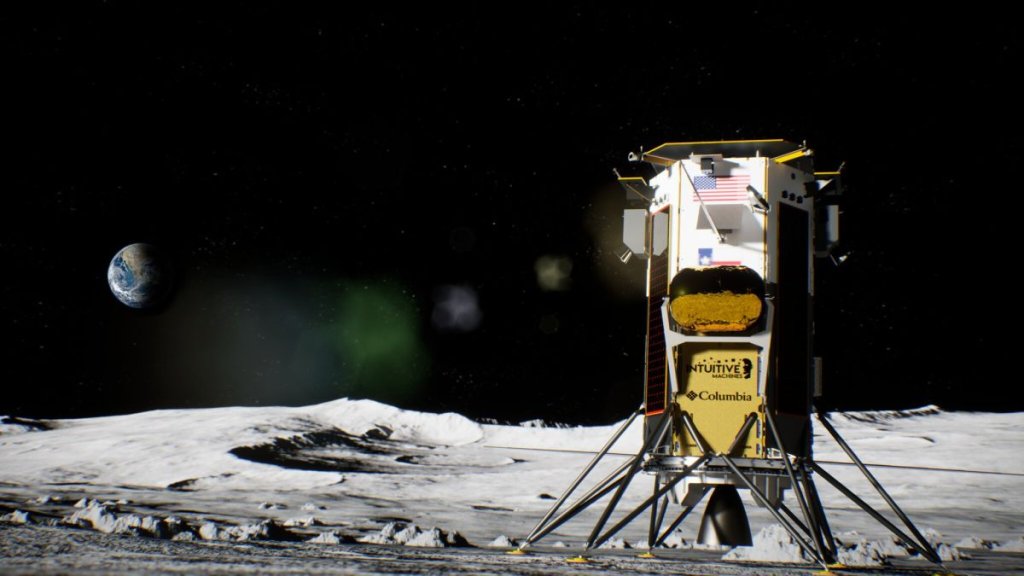A private lander’s mission to the moon’s south pole has been delayed by a few more months, to the fall of 2023.
That lander, built by Texas company Intuitive Machines, had been set to lift off atop a SpaceX Falcon 9 rocket in June, after several previous schedule slips.
The latest delay was reported by SpaceNews (opens in new tab), which listened to an earnings call held by Intuitive Machines on Thursday (May 11). The company didn’t give many details about the launch slip, but CEO Steve Altemus said “significant progress” has been made on the mission, dubbed IM-1.
“We have some functional testing” pending on the Nova-C lander, he said, according to SpaceNews. Altemus did not say more about the tests, nor provide further details about the scheduled launch.
Related: NASA’s full plate of moon missions before astronauts can go
Intuitive Machines aims to become the first private company to touch down softly on the moon. Other companies before it have tried but not succeeded. Most recently, Japan’s ispace lander failed during its attempt on April 25. Previous to that, SpaceIL’s Beresheet lunar lander crashed during an April 2019 landing attempt.
Intuitive Machines’ IM-1 is expected to touch down at a south pole crater called Malapert A, with five NASA science experiments (opens in new tab) on board. The mission had at first been targeted for more equatorial regions, but NASA redirected the landing site southward.
NASA has tasked Intuitive Machines, and a number of other companies, with landing science payloads for the agency’s Commercial Lunar Payload Services (CLPS) program. CLPS is meant to serve as support for the Artemis program, which aims to land astronauts near the lunar south pole on the Artemis 3 mission in 2025 or so, and build one or more bases in the region thereafter.
Intuitive Machines has two other missions in the works for NASA. IM-2 is expected to land near the south pole as well, near Shackleton Crater, while IM-3 will touch down at a swirly feature called Reiner Gamma.
IM-2 may be delayed because of the wait for IM-1, Altemus said during the phone call, the first since Intuitive Machines was listed publicly in February. For now, IM-3 is expected to launch in 2024.
Intuitive Machines reported an operating loss of $14 million in the most recent quarter, compared with $4.5 million in the same quarter of 2022; a portion of the loss, $2.8 million, was due to the costs associated with the merger that took it public. Quarterly revenue was similar to last year, with $18.2 million reported in 2023 and $18.5 million in 2022, SpaceNews reported.
Another U.S. company supported by NASA, Pittsburgh-based Astrobotic, is also attempting to be the first to ace a private touchdown on the moon. Astrobotic’s Peregrine lander is awaiting a now-delayed liftoff aboard United Launch Alliance’s (ULA) new Vulcan Centaur rocket.
A fireball during testing last month has delayed Vulcan Centaur’s first launch, which will send Peregrine toward the moon. That liftoff had been set for June or July. A new launch date has not been announced, but ULA CEO Tory Bruno said in a recent Twitter thread (opens in new tab) that the company is “protecting” a launch date opportunity for sometime in the summer.
Elizabeth Howell is the co-author of “Why Am I Taller (opens in new tab)?” (ECW Press, 2022; with Canadian astronaut Dave Williams), a book about space medicine. Follow her on Twitter @howellspace (opens in new tab). Follow us on Twitter @Spacedotcom (opens in new tab) or Facebook (opens in new tab).

